BNP Croc Breeding

Beez Neez now Chy Whella
Big Bear and Pepe Millard
Wed 18 Apr 2018 22:37
|
Bardia National Park Crocodile Breeding
Centre  After looking around the tiny museum
and the Information Centre we headed to the Crocodile Breeding Centre. Passing
the guard hut, up some steps, through a gate and a troop of monkeys scuttle by
on the wall. Sad, sad sight. The last monkey was carrying
her baby, it had the remnants of a plastic mesh sack that was so tight
around its waist it was not only cutting in but we could see pain in its eyes –
it looked so old and miserable.
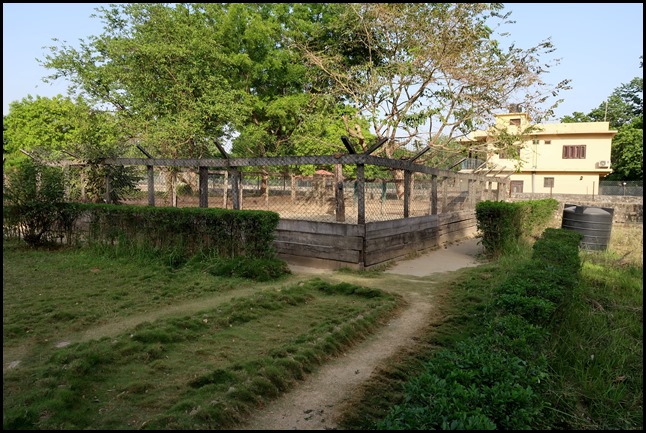 Down the steps and we were in a huge
area with well laid put paths to follow, a pen
ahead.
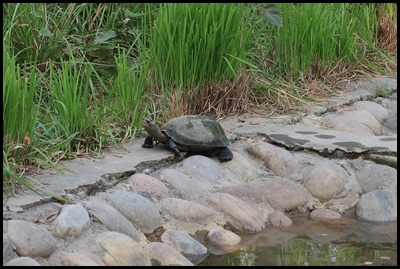 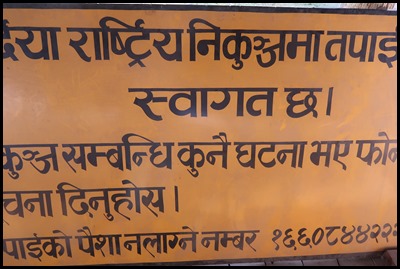 Oh, a
turtle and a sign we would have no clue if we
were here for years.
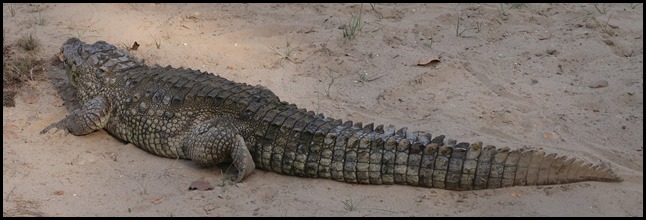  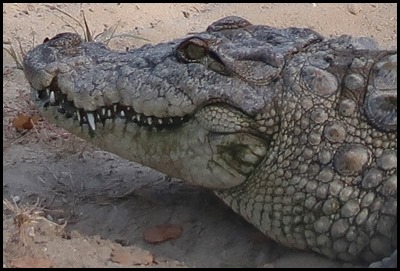  In the next pen were a few
mean-looking mugger crocodiles, on The Red List as Vulnerable. These chaps are exceptionally good
climbers, can cover substantial distances whilst finding suitable habitats and
dig themselves hideouts if it gets too hot or cold. They spend most of their
days lolling about in the water and are found in India, Bangladesh, Sri Lanka,
Pakistan, Nepal, Iran and probably Indo-China. The only crocodile to be found in
Iran and Pakistan. The next pen had the very weird looking Gharial crocs. These Red List Critically Endangered chaps
have been declining in numbers since the 1930’s and it is believed there are as
few as two hundred and fifty of them left.
 Nothing wrong with having a long nose..............
 ..........but knobs on the end ???
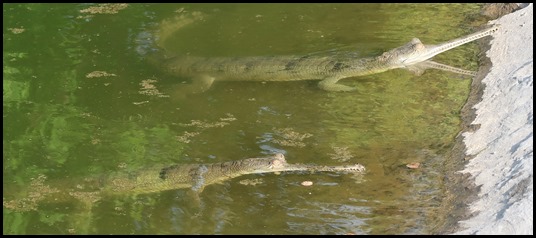 The Information Board read:
Gharial or Long-Snouted Crocodile (Gavialis Gangeticus) counts amongst the
largest crocodile species in the world. It is also one of the two surviving
members of the Gavialidae family. Gharial crocodiles have an elongated and
narrow snout, which becomes thinner with age. There is a bulbous growth at the
tip of an adult male’s snout known as a ghara. The length of a gharial crocodile
is somewhere around 5 to 7 metres. It has long and narrow jaws, which are
razor-sharp. This species is included in the list of protected in Nepal, under
the National Park and Wildlife Conservation Act in 19 and Appendix of the Cites
and also listed in the IUCN Red Data Book.
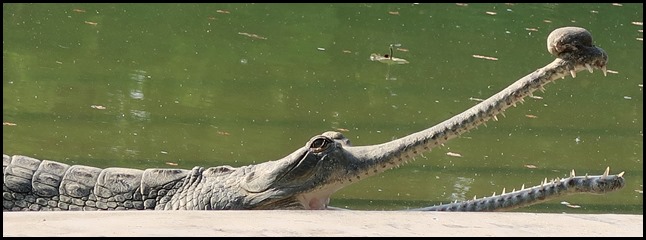 Natural Habitat:- Gharial
crocodiles inhabit the calmer areas of the deep, fast moving rivers. They do not
move much on land and come outside water either to bask in the sun or to nest on
the sandbanks of the rivers.
Geographical Range:- The
geographical range of the gharial crocodile cover the countries of India,
Bangladesh, Nepal and Pakistan. It used to inhabit Bhutan and Myanmar at one
point of time but it is believed to have become almost extinct in these
countries today. Gharial crocodile is mainly found in the river systems of
Koshi, Narayani, Rapti, Karnali, Babai, Mahakali.
 Diet:- Adult gharials survive on
a diet mainly comprising of fish.
Mating Behaviour:- The mating
season of the gharial crocodile stretches from November to January and the
nesting takes place in the month of March to May. The clutch sizes range between
30 and 50 eggs, which are deposited by the female into a hole in the ground. The
eggs hatch after a period of approximately 90 days.
 Status:- The decade of the 1980’s
saw the population of gharial crocodiles of Nepal declining at a fast pace,
taking the reptile to the brink of extinction, however, conservation efforts of
the Nepalese biologists and the Nepal Government have led to a drastic
improvement in the situation. WWF Nepal and UNDP also providing support for its
longer existence. Today, there are around four protected areas in Nepal for
gharial crocodiles, amongst in Chitwan and Bardia National Park both captive
breeding and releasing operations are carried out.
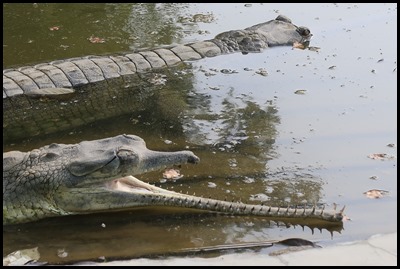  Eyes closed, eyes
open, we guessed this fellow poked his beak somewhere he
shouldn’t......
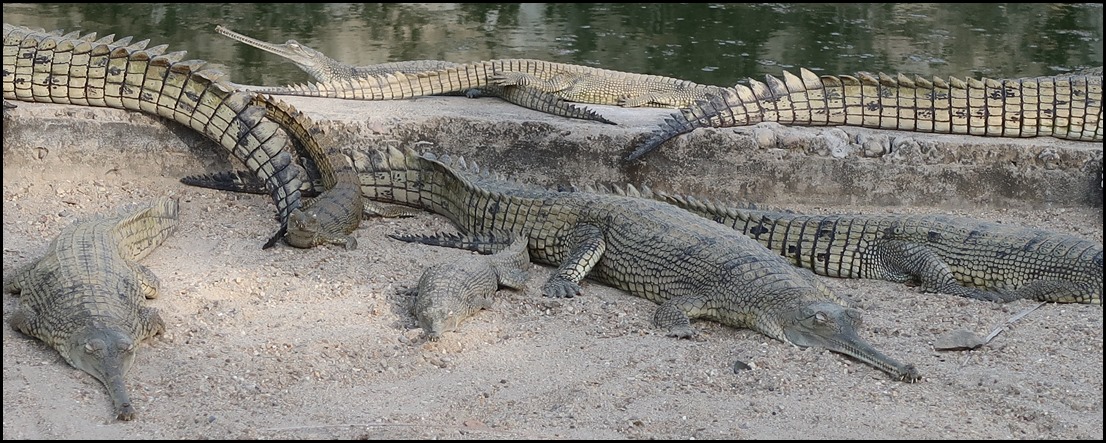 Good to see so many babies...............
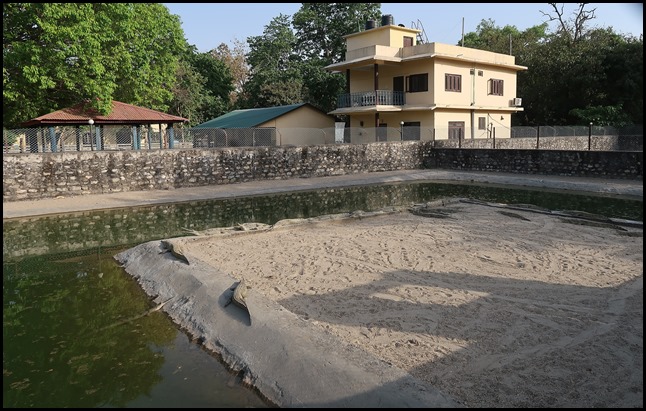 ................... in the mixed
pool living happily with adults. Time to go and meet Vikram the blind
rhino.
ALL IN ALL THEIR LONG BEAKS
ARE EXTRAORDINARY
RATHER THEM THAN
ME |